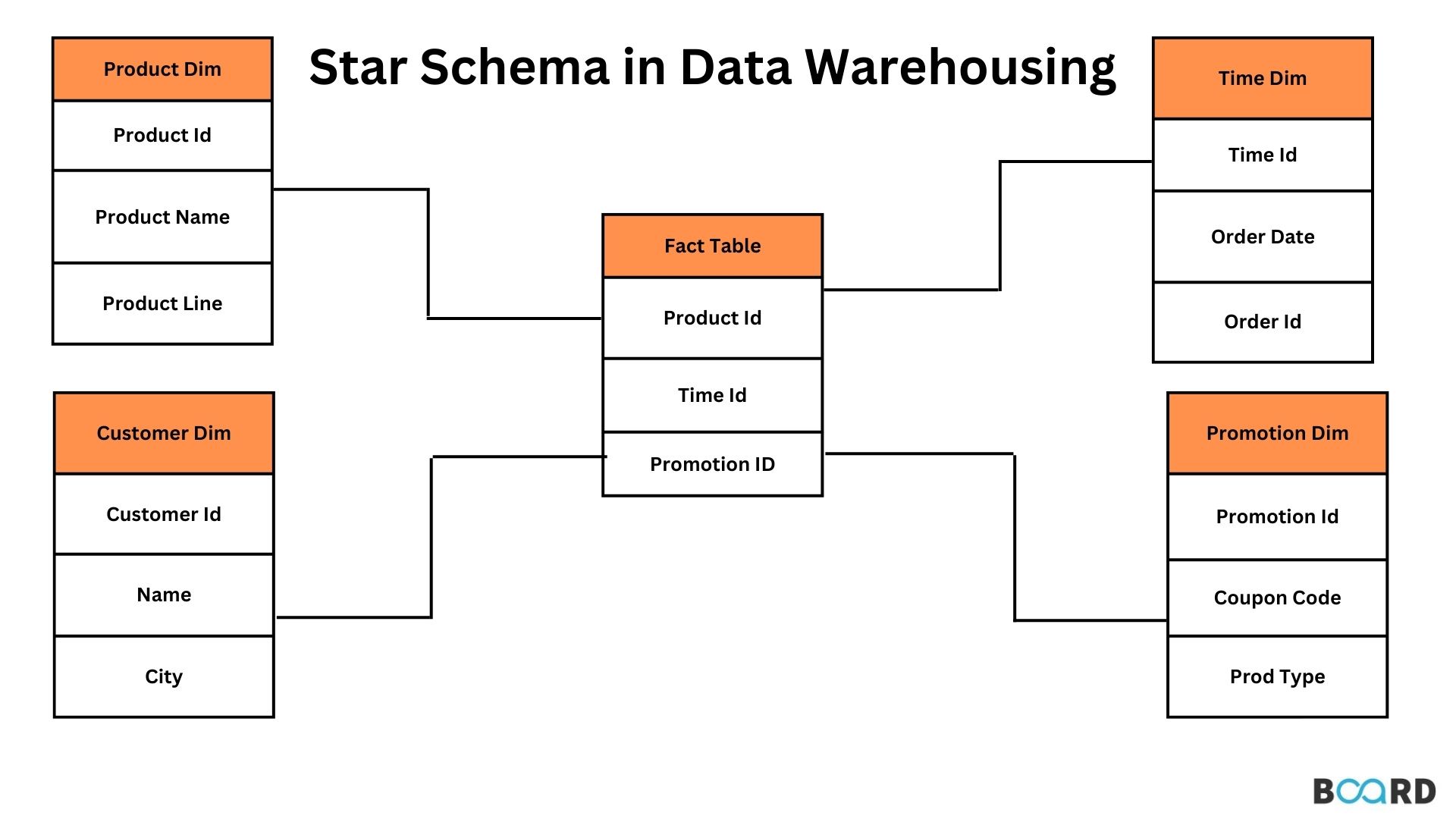Mastering Big Data and Data Warehousing
A Quick Guide to Star Schema in Data Warehousing

Introduction
A star pattern is the basic shape of a dimensional demonstration, in which information is organized into actualities and measurements. Reality is a tallied or measured occasion, such as a deal or log-in. A size incorporates reference information approximately the truth, such as date, thing, or customer.
A star schema may be a social pattern where a social construction whose plan speaks to multidimensional information demonstrate. The star pattern is the unequivocal information distribution center pattern. It is known as star construction since the entity-relationship graph of this mapping recreates a star, with focuses, wandering from a central table.
The center of the construction comprises an expansive reality table, and the focuses of the star are the measurement table.
Characteristics of Star Schema
- Every measurement in a star pattern is spoken to as if it were a one-dimension table.
- The measurement table ought to contain the set of attributes.
- The measurement table is joined to the truth table employing an outside key.
- The measurement table is not joined to each other Fact table would contain the key and measure.
- The Star construction is simple to get and gives ideal disk usage. The measurement tables are not normalized.
- For occasion, within the figure, Country_ID does not have a Nation lookup table as an OLTP plan would have. BI Instruments broadly uphold the pattern.
- Star Schema databases are ideal for storing historical data. This allows them to perform best in data warehouses, data marts, BI applications, and OLAP. Star schemas, which are mostly read-optimized, will provide high performance over huge data sets.
- Organizations can also customize them to offer optimum performance along the precise parameters deemed most critical or often queried upon. Data can be added transactionally as it arrives, or it can be batch imported and then validated and denormalized.
- Star schema database designs often need to be more suitable for real-time data, such as that seen in online transaction processing. Because they are denormalized, they impose constraints that an utterly normalized database does not.
- Slow writes to a client order database, for example, might cause a delay or overflow during peak consumer activity. In a live order fulfillment system, the possibility of data anomalies might be devastating.
EXAMPLE
Dim Date, Dim Store, and Dim Product are the three dimension tables.
Every dimension table contains a primary key that corresponds to one of the Fact Sales table's three-column (compound) primary keys (Date Id, Store Id, Product Id). In this example, the non-primary key Units Sold column of the fact table indicates a measurement or metric that can be utilized in computations and analysis. The dimension tables' non-primary key columns provide extra dimension properties (for example, the Year of the Dim Date dimension).
The following query returns the number of TV sets sold in 1997 by brand and country:
Benefits of Star Schema
End-users and applications can easily comprehend and explore Star Schemas. A well-designed schema allows the client to study big, multidimensional data sets in real time. The following are the primary benefits of star schemas in a decision-support environment:
- Query Performance
- Load performance and administration
- Built-in referential integrity
- Easily Understood
Drawbacks of Star Schema
- The fundamental downside of the star schema is that it is not as adaptable to analytical requirements as a normalized data model.
- Normalized models enable the execution of any type of analytical query as long as it adheres to the business logic described in the model.
- Star schemas are more purpose-built for a certain perspective of the data, and so do not support more complicated analytics.
- Many-to-many linkages between corporate entities are difficult to support using star schemas. In order to correspond to the basic dimensional model, these relationships are often simplified in a star schema.
